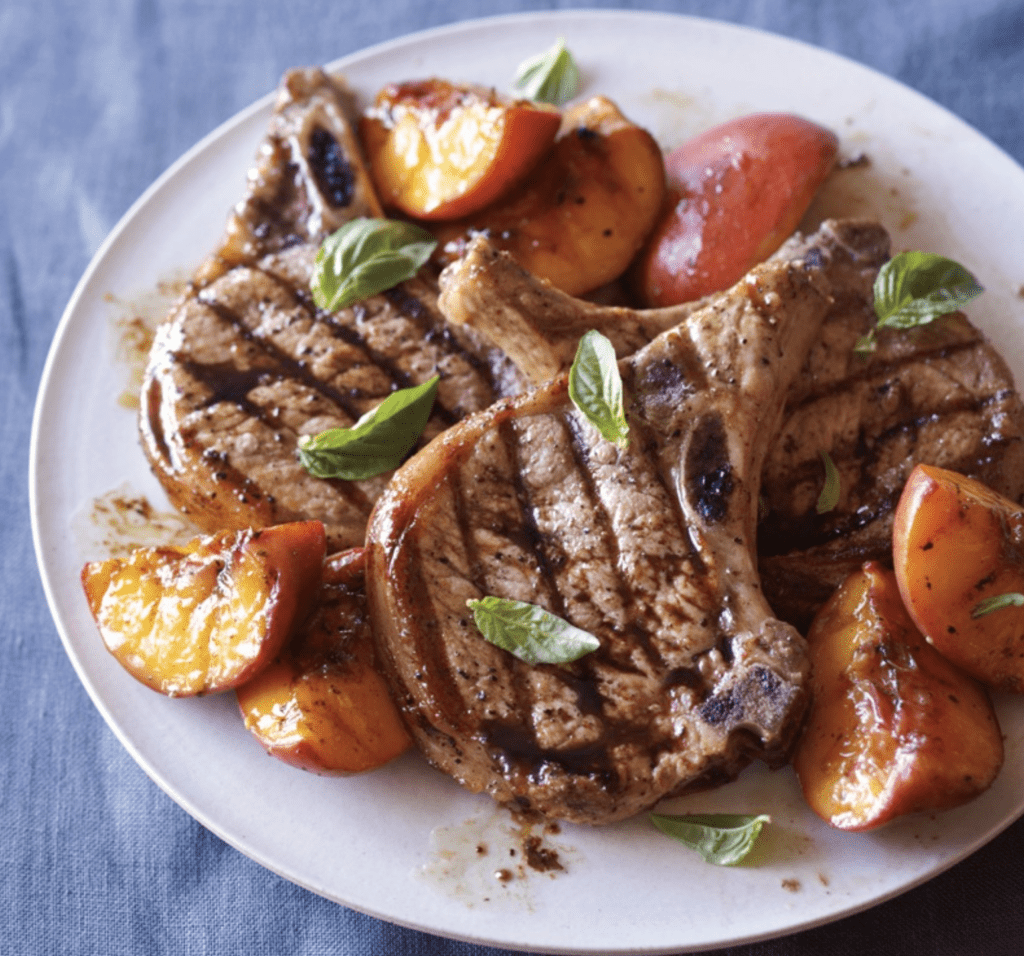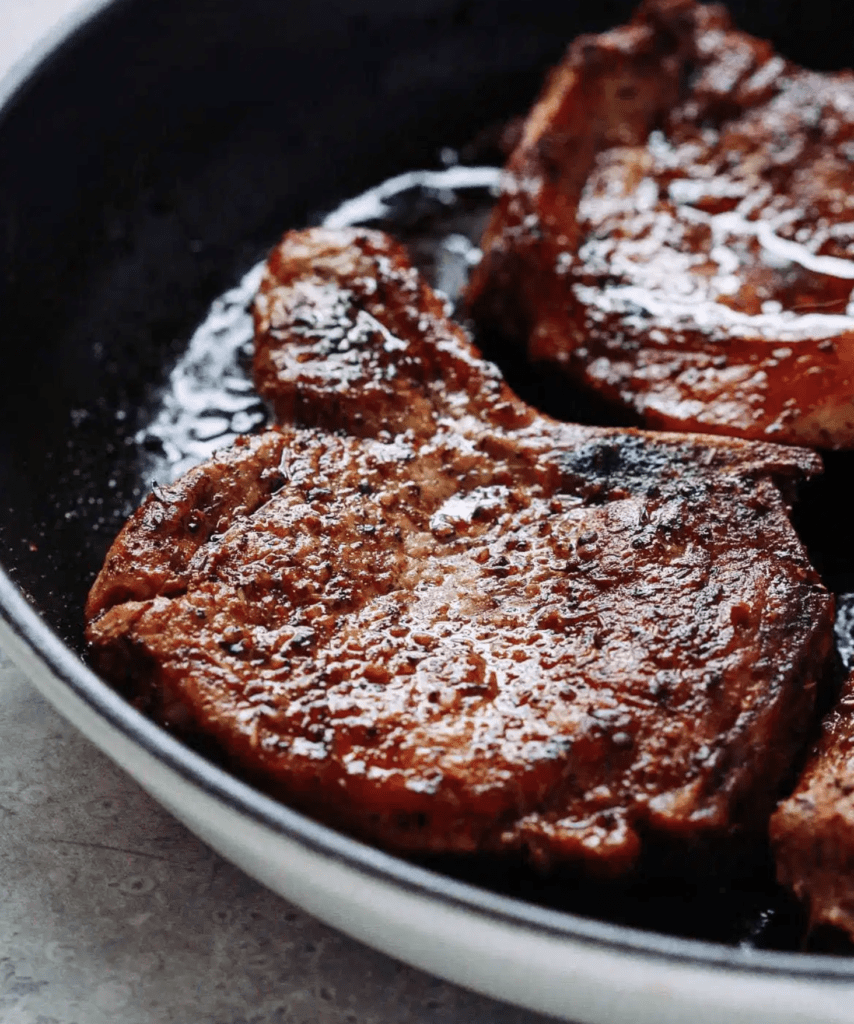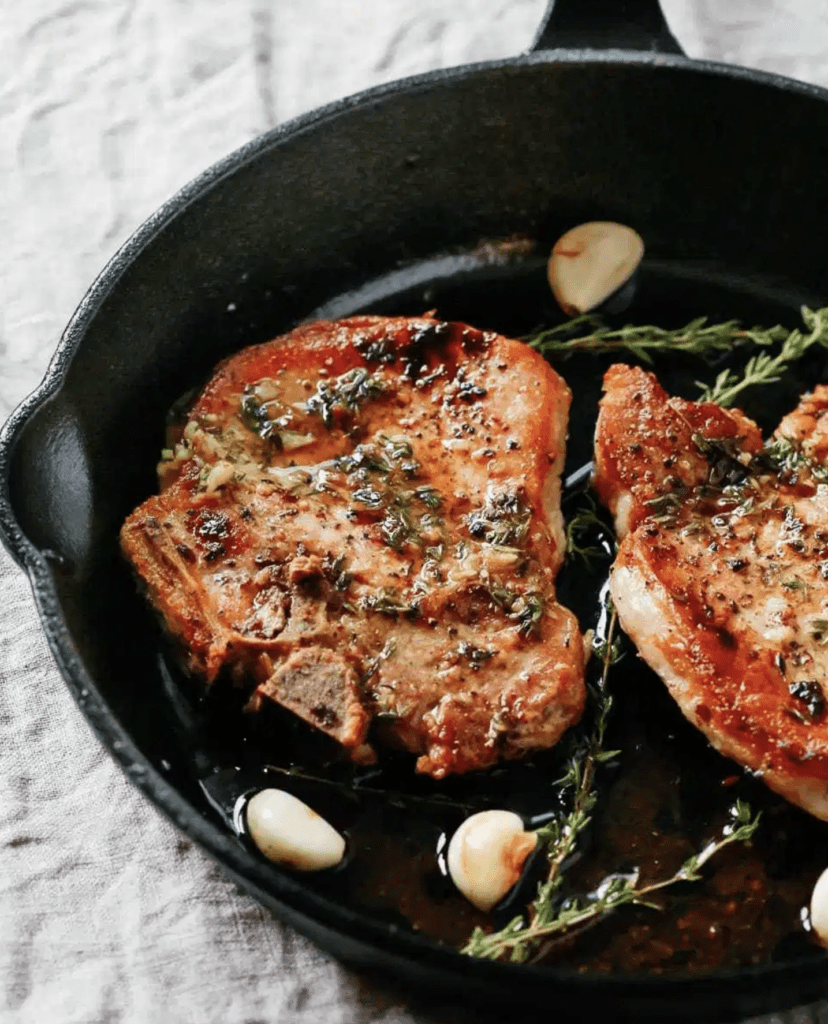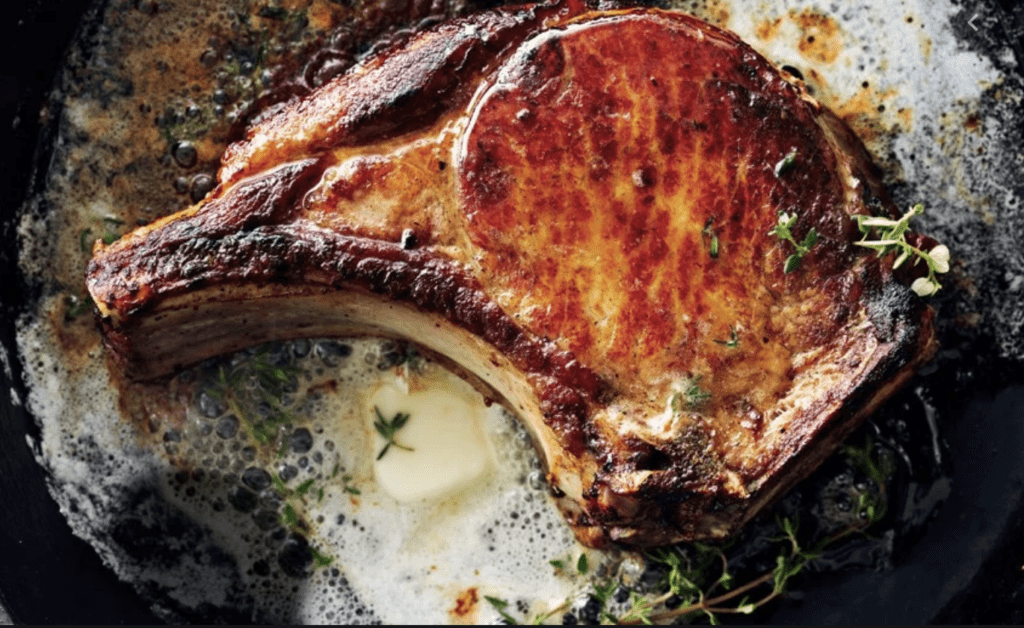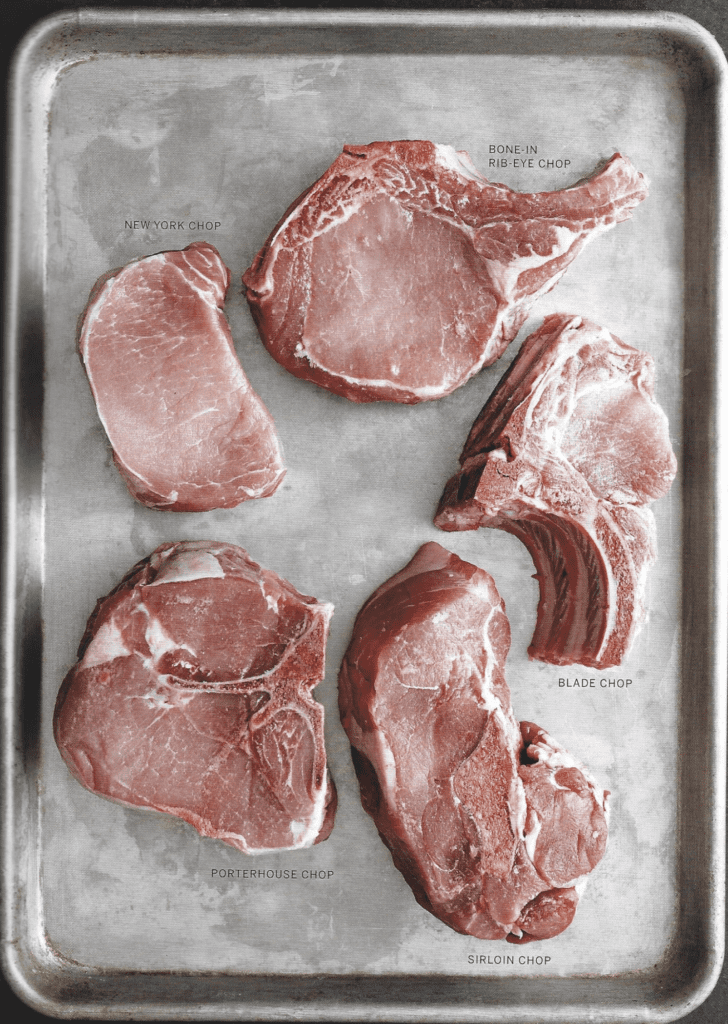Pork
Different Types of Pork
Different Types of Pork
Chops are to pork what steaks are to beef. Most pork chops are cut perpendicular to the backbone from the central loin section, which runs about 18 inches long from the hog’s shoulders to its hips. The shoulders and hips support more weight than the central loin, so pork chops vary in tenderness, toughness, and fat content: How the hogs were raised matters, too. Pasture-raised pork tends to be richer and more flavorful but also a bit tougher and less consistent than commodity pork.
How Do You Keep Different Types of Pork Juicy
The keys to juicy chops are brining and being careful not to overcook them. Most pork chops come from the leanest part of the hog, the loin, so they tend to dry out when grilled. Plus, modern hog breeds like Yorkshire and Poland China White that produce most of the retail pork have been bred to be leaner than heritage breeds like Dume and Berkshire (also known as Kurobuta). Both wet and dry brines help pork chops stay juicy.
How Best To Cook Pork Chops
Most chops can go directly over the heat, but it helps to build a fire with two heat levels, especially if you’re grilling thick chops. Use the higher heat area for searing and browning the surface, and use the lower heat area with the grill lid down to cook the chops through without burning the surface. Bone-in chops take a little longer to cook.
When is a Pork Chop Done?
A thermometer is indispensable. The color of meat is not a reliable doneness indicator, and it may be safe to eat pink pork. According to the USDA and the National Pork Board, pork chops are safe to eat when cooked to an internal temperature of 145°F (63°C).
What’s the Best Cut of Pork Chop?
For grilling, we prefer bone-in rib-eye chops that are at least 1 ½ inches thick. But try different cuts to see which you like best. Pork chops were renamed a few years ago so they would correspond more closely with the terms used for beef steaks.
Different Types of Pork – Blade Chops: Also called shoulder chops, these are cut from the shoulder blade of the hog. Blade chops include some bone and various intersecting muscles. When cut thick (at least 2 inches), they’re called pork blade steaks or shoulder steaks. Either way, the muscles here are well developed, interspersed with connective tissue and fat, and have a meaty flavor and chewy texture.

How to Cook Blade Pork Chops
Blade chops are found closer to the shoulder area. They have bones, and are usually thick, with marbling. They are often are butterflied and sold as country-style ribs. The extra marbling means these ribs will stay moist and tender if you braise them, and they are the perfect cut of pork for cooking on the grill.
The Cut – Blade Chop, Pork Shoulder Steak, Pork Steak
This cut comes from the shoulder. It is a cross section cut of the Boston Butt and has a large bone through the middle. Tough and loaded with connective tissue this chop should be marinated before grilling. It can also be grilled or smoked low and slow to maximize the tenderness.
Blade Chop Recipes:
Different Types of Pork – Rib-Eye Chops: Just like beef rib-eye steaks, pork rib-eye chops are cut from the rib section of the loin, closer to the shoulder. They are somewhat tender and marbled with a moderate amount of fat, which keeps them from drying out on the grill. Formerly called rib chops, they fetch the highest price.
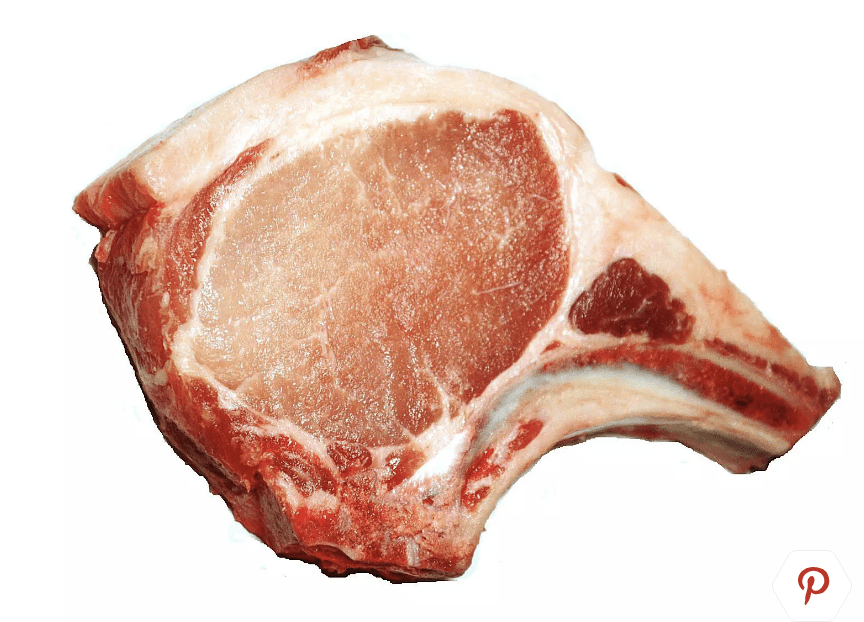
How to Cook Rib-Eye Pork
Chops Rib-eye pork chops are the pork equivalent of a rib-eye steak. They are the meat and one bone of a “prime rib.” Because they are typically well-marbled chops, they are juicy and tender. Perfect for grilling, pan-frying or broiling, rib-eye chops—like all pork—should be cooked to an internal temperature of 145°F.
The Cut – Bone-In Ribeye Chop, Rib End Cut
Cut from the lower loin, this is one of the best pork chops money can buy. Trim excess fat and cook hot and fast. This cut can be treated like a good steak and seasoned simply or however you like it.
Rib Eye Chop Recipes:
Different Types of Pork – Porterhouse Chops: While rib-eye chops have a single eye of loin meat on one side of the bone, porterhouse or T-bone chops also include a bit of pork tenderloin on the other side, like a T-bone steak. This cut used to be called a center-cut or bone-in loin chop.
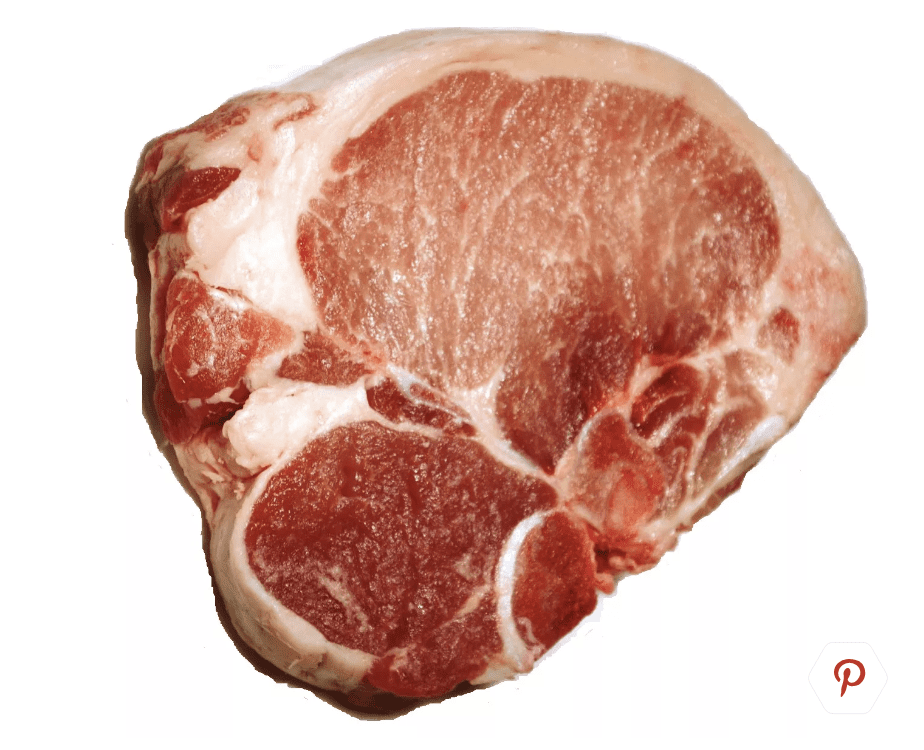
How to Cook Porterhouse Pork Chops
Porterhouse pork chops are the best of both worlds – they have loin and tenderloin on either side of the T-shape bone in the middle of the chop. Any recipe for T-bone steak will work with these pork chops. One of the most important parts of learning how to cook a pork chop is to get to get an internal temperature read of 145°F. Any quick cooking technique, whether you grill, broil, sauté or pan-fry, works best, as it will keep them tender. Avoid braising however as it is best for pork shoulder recipes.
The Cut – Porterhouse Chop, Top Loin Chop
Cut from the center loin this pork chop has both loin and tenderloin sections. Generally a large cut, it is the porterhouse of pork. Great grilled hot and fast, this can be lightly seasoned for a perfect meal.
Porterhouse Chop Recommended Recipes:
Different Types of Pork – New York Chops: Once known as a top loin chop, this boneless cut is not the most flavorful, but it is the leanest and most tender. It is sometimes thinly cut(¼ to½ inch) and called a breakfast chop or pork minute steak.
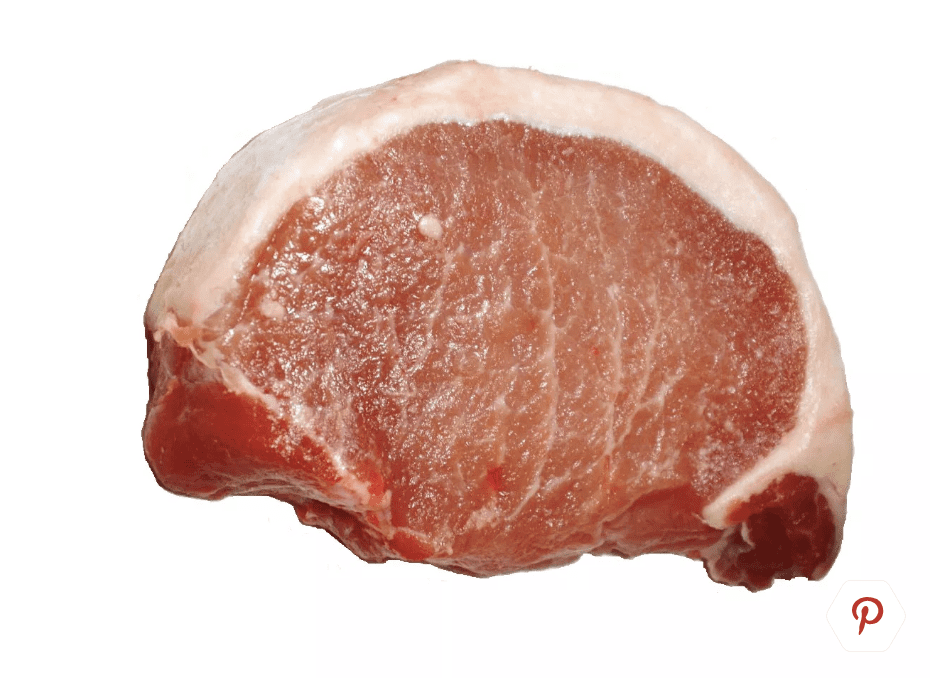
How to Cook New York or Center-cut Pork Chops
New York pork chops, also called center-cut chops, are the pork chop version of a New York strip steak. They either can be boneless or on the bone, but most markets sell only the boneless pork chop. They range in thickness from ½ inch to 2 inches. To keep the thickest chops moist and to avoid overcooking, consider searing on the grill or stovetop and finishing in the oven. Remember that pork doesn’t need to be cooked to 160°F anymore. The new guideline established by the USDA is 145°F. The cooking time is not influenced by whether the cut of meat contains a bone and the time remains the same.
NY Chop Recipes:
Different Types of Pork – Sirloin Chops: The most economical cut, a sirloin chop comes from just above the hog’s hind leg and often includes a bit of hip bone. Neither tender and lean nor tough and rich, sirloin chops represent the more variable middle ground.
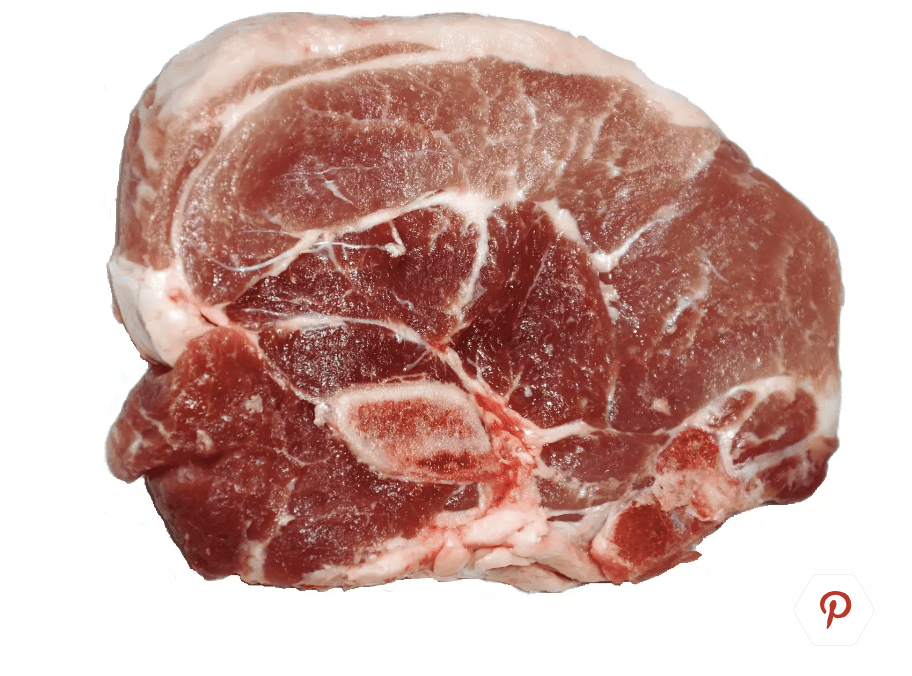
How to Cook Sirloin Pork Chops
Sirloin pork chops are closer to the hip. Really, they’re the pork equivalent of a rump roast. They’re great when you’re looking for a Healthy Living option, like our Lime Pork Chops with Asparagus. Because they are lean, quick-cooking is best. Braising is not a good option for this cut.
The Cut – Sirloin Chop
From below the loin section, this cut contains different kinds of meat making is a challenge to grill and keep tender. This pork chop should be marinated for several hours before grilling. This is also a good cut for braising.
Sirloin Chop Recipes:
Pork Ribs
Pork ribs are cut from the rib cage of the hog. Tough connective tissue, fat, and a mixture of fine-grained and coarse meat surround the rib bones. Coaxing a rack of ribs to tender, juicy succulence takes a little practice but is well worth the effort.
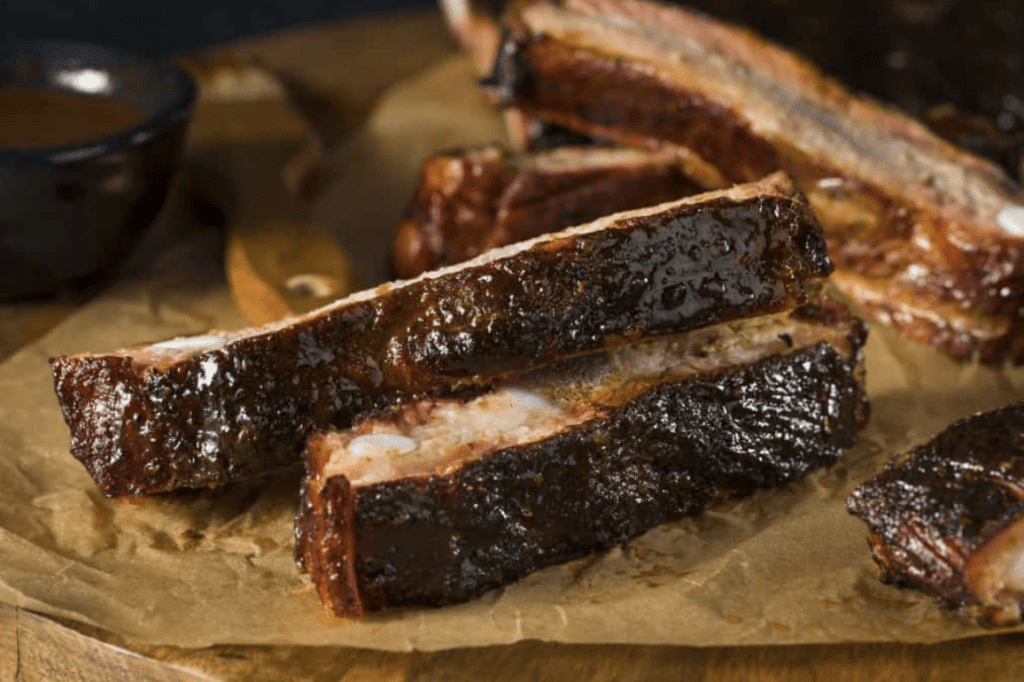
Different Types of Pork – What’s Best on the Grill
You can grill any cut of ribs. Here are your choices.
Baby Back Ribs: Also known as loin back ribs, these are smaller than spareribs and come
from the hog’s back, hence the name. A slab
of baby backs has eight to thirteen ribs and the meat is leaner, more tender, and less flavorful than spareribs.
Spareribs: Cut from the side of the hog, spareribs come in a slab of at least eleven bones. The slab tapers at one end and has a flap of tough brisket meat attached to the wider end. Larger and richer tasting than baby backs and with a more satisfying chew, spareribs are our preferred
cut of ribs for grilling.
St. Louis-Style Ribs: A rack of spareribs includes a triangular section of rib tips with portions
of breast meat, sternum, and diaphragm. When removed, the rack looks perfectly rectangular and is called a St. Louis cut. This cut of spareribs cooks more evenly than a full rack of spareribs and is easier to portion into individual servings, so we generally prefer it for grilling.
Country-Style Ribs: These are not really ribs because they are not from the rib section. Often sold as individual “ribs,” bone-in country-style ribs are cut from the shoulder blade, and boneless country-style ribs come from a rear portion of loin. The bone-in style can be grilled like pork blade chops, and the boneless style can be grilled like sirloin chops.
Types of Pork – Prepping Ribs for the Grill
Whichever ribs you prefer, be sure to remove the shiny white membrane from the underside (bone side) of the rack. This membrane tightens and toughens during cooking, keeping the finished ribs from tasting tender. Lift up a corner of the membrane with the tip of a knife, then grab it with a paper towel and slowly pull off the entire membrane in a single sheet. Removing the membrane also allows your seasoning to penetrate more deeply into the meat.
Types of Pork – Best Way to Keep Ribs Moist
Ribs include a fair amount of tough connective tissue, and portions of the meat itself can be lean and prone to dryness, especially if you prefer baby back ribs. Slow cooking and adding moisture are the secrets to dissolving tough collagen into rich-tasting gelatin and keeping lean ribs from drying out. You can brine the ribs to help them hang onto moisture as they cook. You can keep a pan of steaming liquid in the closed grill to help introduce moisture. You can spritz, baste, or mop the ribs with liquid as they cook. And you can wrap cooked ribs in aluminum foil so they steam in their own juices while resting off the heat. All four methods work reasonably well, but our preferred methods are brining and using a water pan in the grill. These two methods result in juicy, tender ribs that still have a satisfying chew.
Types of Pork – When to Apply Sauce
At the very end. Most barbecue sauces are high in sugar and burn easily on the grill. Brush on barbecue sauce only during the last 10 to 15 minutes of cooking and let your guests add extra sauce at the table.

